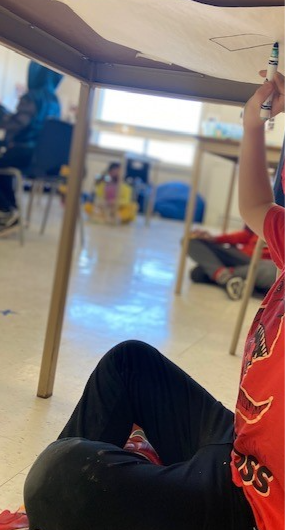Back
Six Ways to Create a Fun-Filled March Break Staycation
The days are getting longer and that can only mean one thing – warmer weather is on the way. But first, March Break! This weeklong break from all things routine and school means plenty of time to spend with family, if possible.
Here are six family-friendly ways to spend the week, while bonding and having fun together:
1. Growing Beans. This is a great activity for children to learn how to nurture and care for plants. They get to use their observational skills over the span of a few days/weeks.
Materials:
-
Kidney Beans
-
Paper towel
-
Ziploc Bag or glass jar
-
Water
Guide:
-
Fill the Ziploc bag or glass jar halfway with paper towels.
-
Place several beans on the outside of the paper towels in the bag so you can watch them grow.
-
Spray the paper towels with water to dampen them.
-
Place the bag or jar near a window or on a window ledge.
-
Make sure you poke holes or leave the Ziploc bag open for air circulation.
-
Observe and watch the beans grow over the following days and weeks!

2. DIY Marble Maze. Got a few extra boxes at home? You can create your very own elaborate marble maze with recycled goods.
Materials:
-
Cardboard
-
Scissors
-
Tape or Glue
Guide:
-
Cut the base of your marble maze.
-
Cut strips for your edges and tape them to create a wall around the base.
-
Cut strip of different sizes and tape the down to complete your maze.

3. Nature’s Paint Brush
Materials:
-
Twigs/branches
-
Flowers/leaves
-
Paint
-
Paper
-
Optional: Clothespin
Guide:
-
Go on an outdoor adventure and search for leaves and other plants that would make interesting brushes for a paint project.
-
Collect a variety of different textures to explore the effects.
-
To create the handle of the brush, you may use Clothespins or twigs/branches to create a handle for your brushes.
-
Once you’re back home, test the nature brushes with paint and paper.

4. Upside Down Art
Materials:
Guide:
-
Tape paper under a table.
-
Either lay down or sit up and begin your drawing.
-
You can give your child drawing prompts based on their interest.

5. DIY Watercolour Paint
Materials:
-
4 tbsp baking soda
-
2 tbsp white vinegar
-
½ tsp light corn syrup or karo
-
2 tbsp cornstarch
-
Food colour
-
Mini Muffin tin or ice cube tray
Guide:
-
Mix the baking soda and vinegar together in a spouted container (a jug or 2 cup measuring cup).
-
Add the corn syrup and cornstarch, mix well until cornstarch has dissolved. Keep stirring the mix to keep it in liquid form so it is easier to pour.
-
Pour into your muffin tin or ice cube tray.
-
Add drops of food colour in each palette.
-
Stir with a popsicle stick.
6. Ramp Challenge. A great opportunity to experiment with different materials indoors, you’ll need a cardboard box, tape, scissors, timers. Optional materials: aluminum foil, fabric, wax paper, etc. Instructions:
-
Have children create ramps out of cardboard.
-
Encourage children to gather the object they want to experiment with. This could be ice cubes, snowballs, cars, etc.
-
Children can use the object to roll down their ramp. Think about how you can add challenges: What objects will go down the ramp in less than 5 seconds? 1 second? Can the object roll down the entire ramp without it losing contact?
-
Support children’s learning with observational comments and by asking open-ended questions, provoking their critical thought and inquiry.
-
Tip: Experiment with changing the elevation of the ramp, angle of the ramp, and placing different materials on the ramp (aluminum foil, fabric, wax paper, etc.).

Looking for more ideas on how to make your March Break staycation a memorable one? Whether it’s a science, arts, or physical activity, visit our blog for more activities designed to inspire creativity, movement, and problem solving.
For more family-friendly activities, visit the City of Mississauga’s Recreation website, the City of Brampton’s website, and check out these free and affordable City of Toronto March Break activities.
Additional resources you may find helpful:
What’s your go-to March Break activity? Share in the comment section below!
PLASP Child Care Services